Known as the Old Pueblo, Tucson is famed for its sunny skies and unique desert landscapes. The second-most populated city in Arizona is home to many fascinating attractions and outdoor adventures that will fill your own itinerary to the limit.
Within the downtown area, you’ll discover historic communities, colonial architecture and many museums among the walkable barrios. Soon the city streets disperse, replaced by an exotic desert landscape covered by the unique saguaro cacti.
Planning a trip to southern Arizona? Our three days in Tucson itinerary will help you explore like a local.
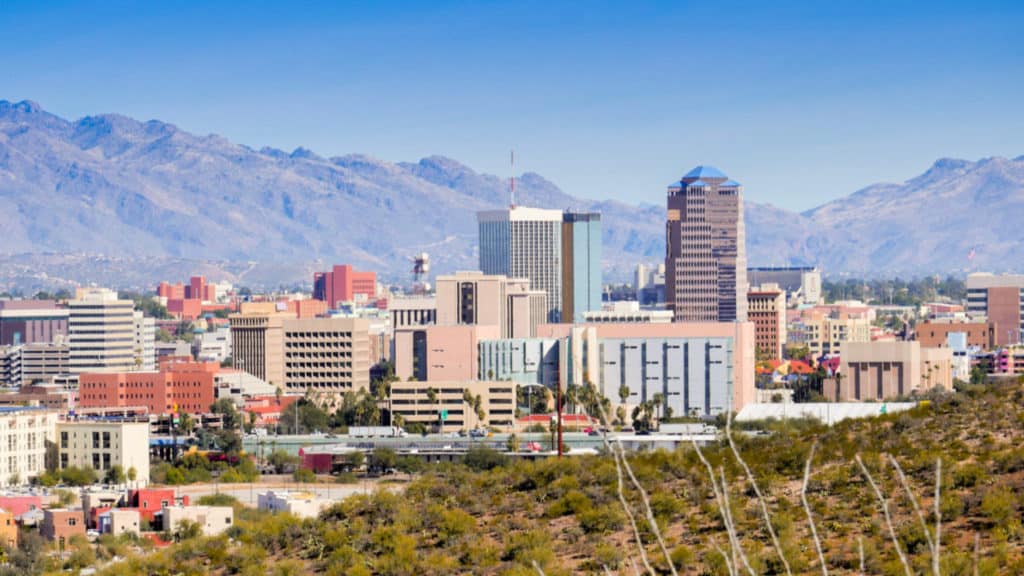
Where to Stay in Tucson
The majority of Tucson attractions that aren’t outdoor adventures are found within the downtown district. This is the most popular place to stay while in town. Have easy access to vibrant neighborhoods and Fourth Avenue, along with museums and dining.
If you’d prefer to be out of the city and among the hills, then North Tucson and Catalina offer a prime escape. Stay in the foothills of the Catalina Mountain Range while only being a few minutes from the center of Tucson.
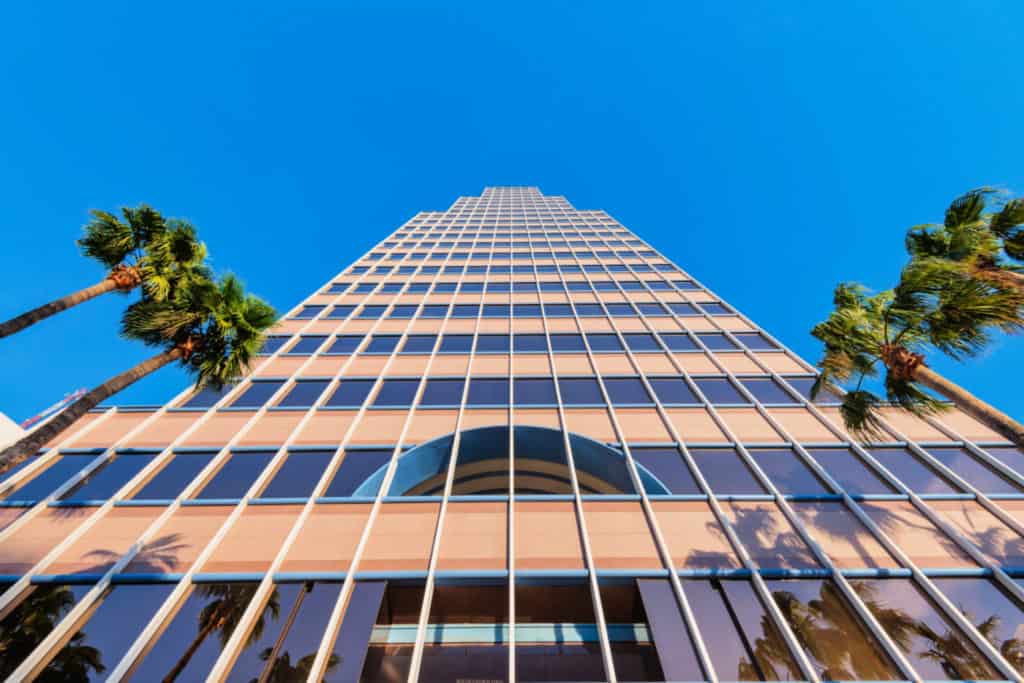
The Best Time of Year to Visit Tucson
Like a lot of desert destinations, Tucson turns the tourist season on its head. Winter time is the most popular time of year to explore the southern Arizona city. With cooler temperatures, blue skies and some snow on the higher peaks, Tucson is a great city to explore in order to escape the bitter northern winters.
The shoulder seasons, spring and fall also offer crisp but lovely temperatures, perfect for hiking and exploring the amazing landscapes. The summer heat tends to be stifling and can make it difficult to appreciate the outdoor spaces.
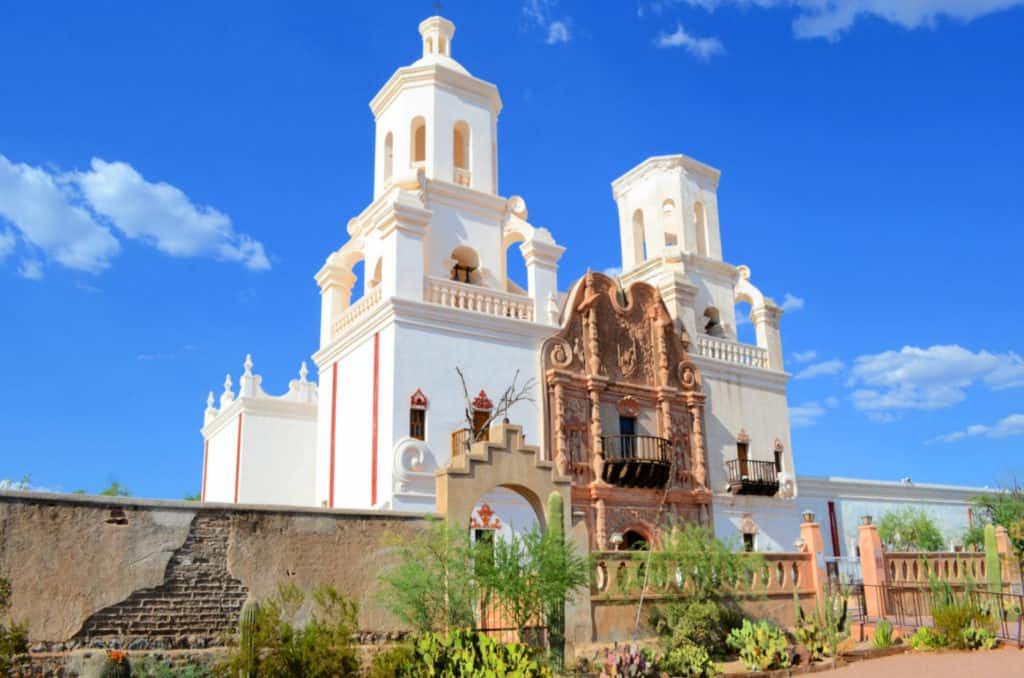
Day One: Missions, Museums, and Shopping
Begin your 72 hours in Tucson, Arizona by exploring one of the oldest Spanish missions in the state. The San Xavier Del Bac Mission is an eye-popping baroque-style example of exceptional colonial architecture. The mission itself was opened just before the turn of the 19th century, but the history of San Xavier del Bac’s community goes all the way back to 1692!
Known as the ‘White Dove of the Desert’ the mission is one of the top attractions in Tucson, seeing over 200,000 visitors each year. Despite all the foot traffic, it remains one of the best preserved missions in the United States. Now a national historic landmark, San Xavier del Bac is still a working parish to this day. The native Tohono O’odlham community keeps the tradition of the church alive and well.
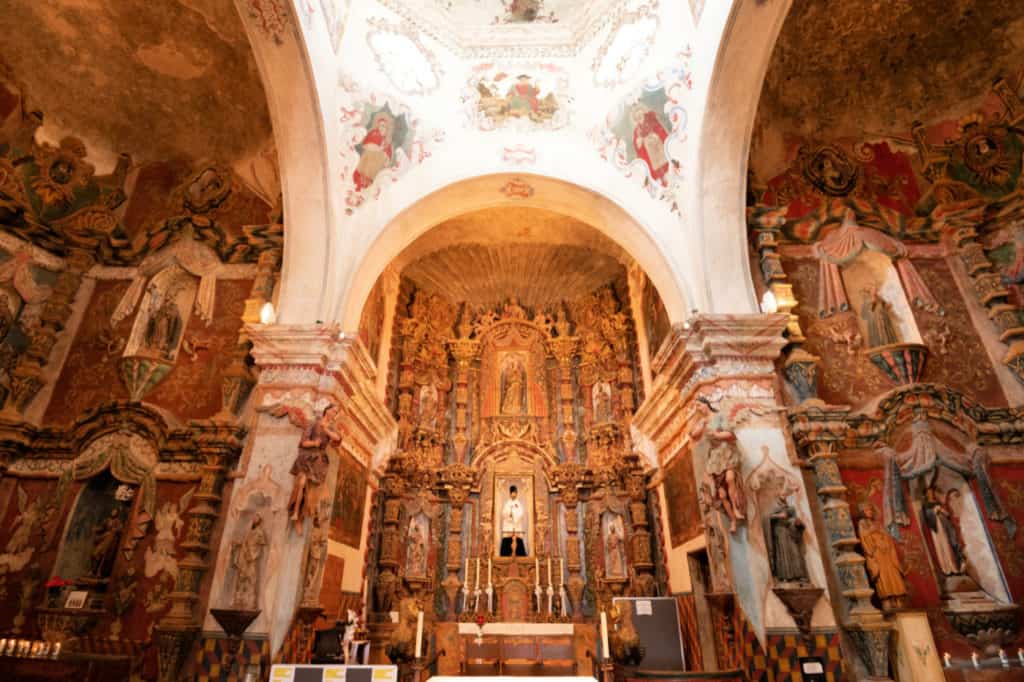
As stunning as the exterior designs are, to fully appreciate this historic mission, you must explore the inside. Better yet, venture in alongside a docent on a free tour (donations encouraged). The mission houses a mix of Native American and colonial influences. With several ancient statues, frescoes and the huge altarpiece, the interior has often been labeled the ‘Sistine Chapel of the Southwest’.
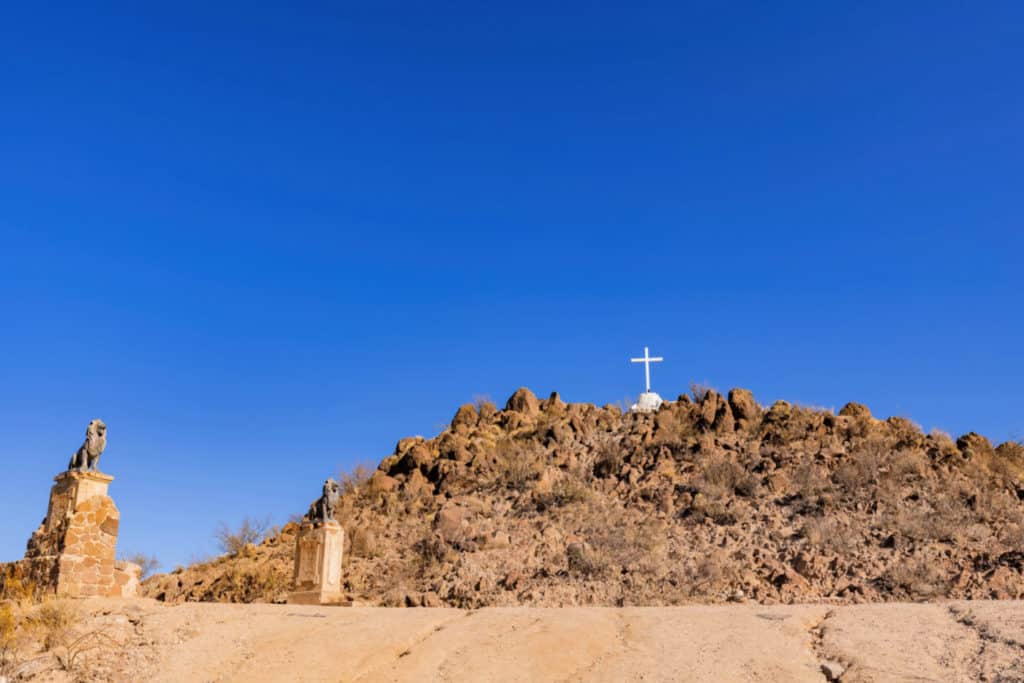
Such a popular attraction can bring the crowds, but if you want to enjoy the mission with some breathing room, climb Grotto Hill to the right of the church. From the viewpoint you can experience the Mission, the desert colors and bright blue sky all at once.
If you at San Xavier del Bac on a Sunday, stop by the adjacent square to try some Native American food. Our pick? You can’t beat the fry bread with beans and chili.
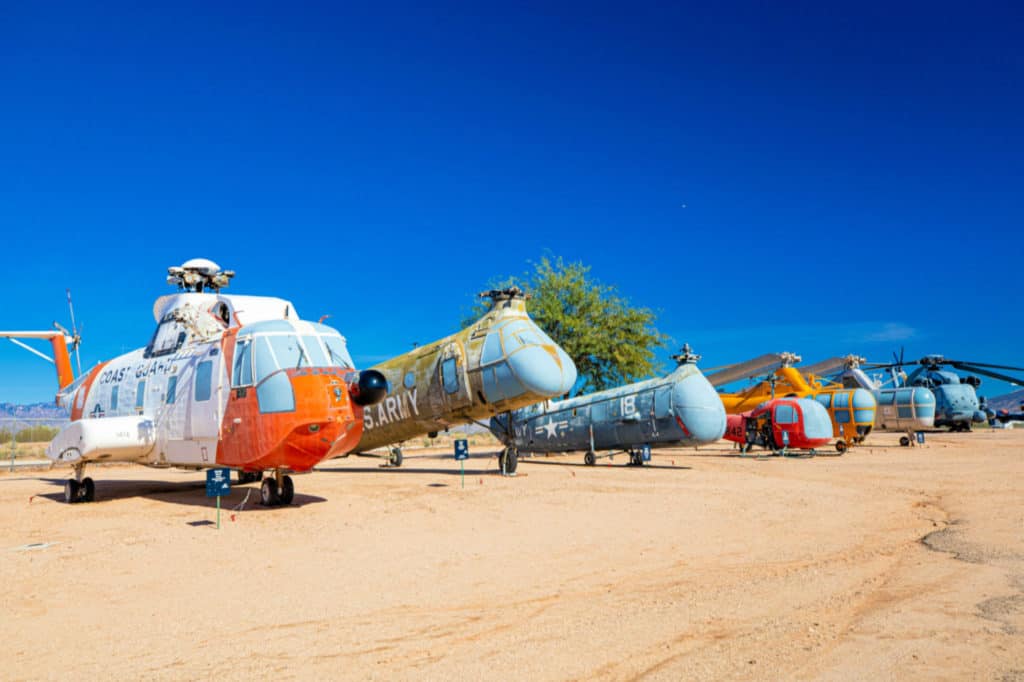
Next up, the Pima Air and Space Museum.
Open every day of the year except for Thanksgiving and Christmas, the Pima Air and Space Museum is one of the top attractions in Tucson. A place that will fascinate young and old alike. After opening in 1976, the museum immediately became the largest nonprofit aerospace museum in the USA, a title it still holds to this day.
What began as a way to preserve aircraft that were on the scrapheap at the nearby Davis-Monthan Air Force Base has grown into a collection of 400 civil, military, commercial and experimental aircraft.
The huge museum covers 125,000 square feet of indoor space, comprises 6 hangars and 80 acres outside. The diverse selection of aircraft are separated into various sections, such as the World War II Hangars, the Space Gallery, and the Arizona Aviation Hall of Fame. Not to mention the 200 odd planes scattered around the outdoor space.
Anyone interested in astronomy, the history of flight, or just wants to get up close to iconic fighter planes, then the Pima Air and Space Museum won’t disappoint. Tickets come with a variety of options, with the chance to enjoy a tram tour around the museum grounds, or partake in a guided tour of the ‘Boneyard’. The Boneyard is the largest aircraft preservation facility on earth.
Tours book out in advance, so be sure to get your reservation in before you arrive in Tucson.
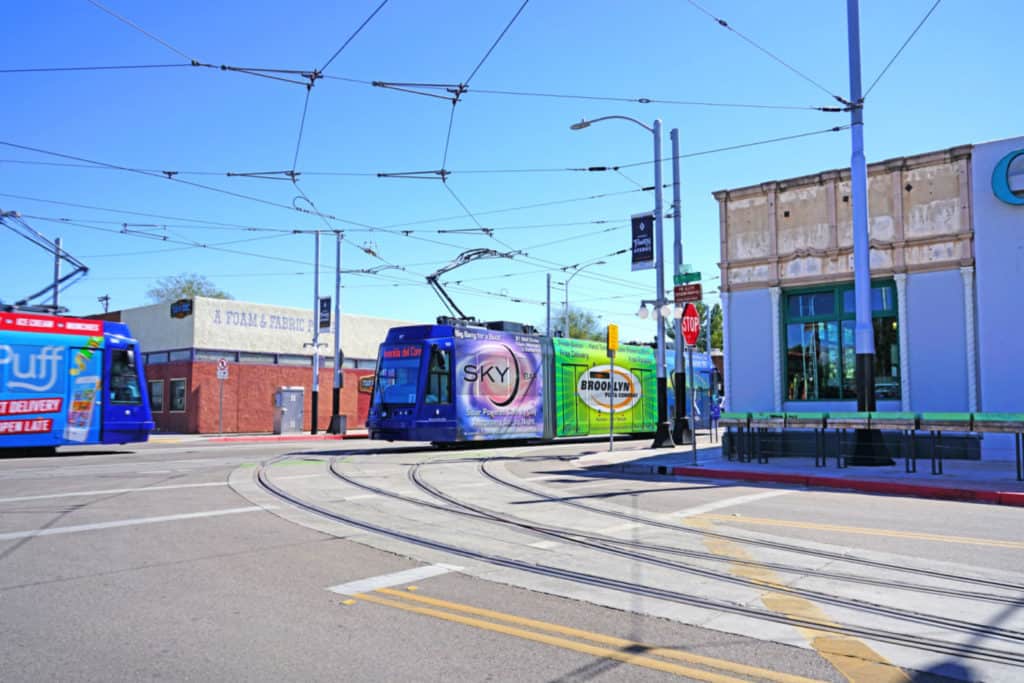
As you head into the late afternoon, make your way to downtown Tucson, where you will find the vibrant 4th Avenue and the historic El Presidio. Downtown Tucson is as diverse as it is exciting, the district is broken down into several sub-communities, each with something unique to offer.
End your day by roaming the streets of Tucson’s Fourth Avenue District, where you can discover the abundance of murals coated on walls around every corner. It’s believed that Tucson has over 1000 murals to discover, more than you could bargain for during a three-day adventure.
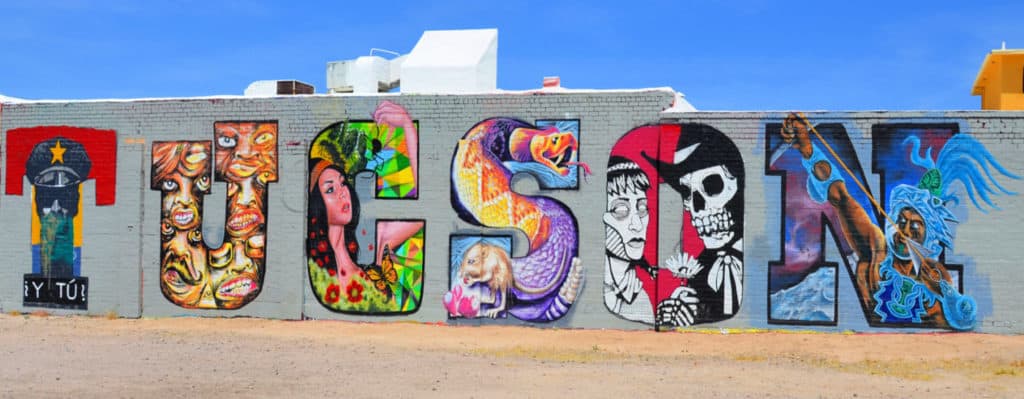
However, the majority are found in downtown, and with the help of this map you can stroll the Fourth Avenue District, ticking them off as you go. Two of the must-see murals include Greetings From Tucson (E 7th Street/N Arizona Ave) and the mesmerizing Mayahuel on the side of the Tucson Warehouse and Transfer Building.
Fourth Avenue itself isn’t all about murals and self-expression. It harbors trendy restaurants, chic cafes and independent boutiques selling local fashion and your next cherished souvenir.
Once you have your mural and shopping fix, toast to a great first day in Tucson at Borderlands. The microbrewery is a local favorite, based alongside the train tracks. Grab one of their famous guava sours or chocolate stouts.
If you want to keep the night rolling, venture to Sky Bar, a bar entirely powered by solar. Outfitted with top of the line telescopes, you can grab a drink and enjoy staring out at the dazzling cosmos. Open mics and local live music are also held throughout the week.
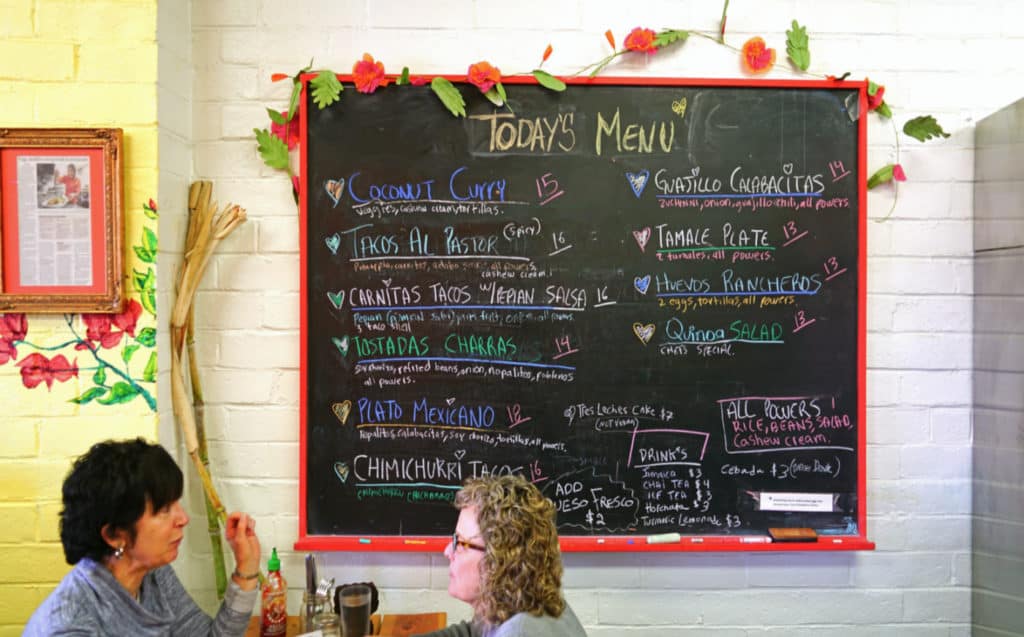
Where to Eat on Day One in Tucson
For lunch, fuel up at Tumerico. Kick back in the relaxing restaurant and nosh on a variety of vegan and vegetarian Mexican cuisine. Stuck for choice? Grab their specialty Tumerico Burrito.
Dine out at Anello Pizzeria for dinner on night one. The Neopolitan-style wood-fired pizza showcases local ingredients with immense all-round flavors. With no signs or decal, it’s hard to spot, but keep an eye out for the bar of red light to know you’ve arrived.
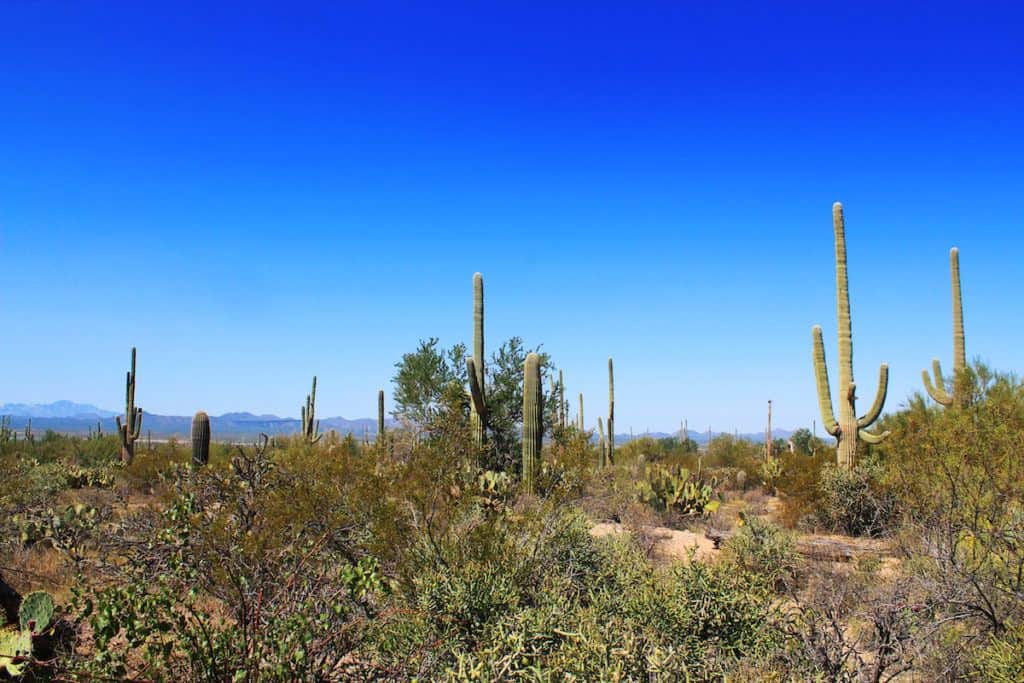
Day Two: Desert, Zoos, and Views
Your first morning in Tucson begins with an exciting brunch at Nook but after the check is in, it’s time to embark on a journey through Saguaro National Park. The park is named after the chandelier-like saguaro cactus, which only grows in the Sonoran Desert.
Being easy to visit, with a ton of scenic drives and short day hikes, the Saguaro National Park is a breeze to enjoy. An adventurous soul may want to spend an entire day among the cacti, but to see the highlights, a simple half day undertaking will do the trick.
The national park is actually split into two sections, with the city of Tucson cutting it in half. The west side is the most popular section, so expect so more crowds. However, it’s worth it purely for the denser population of cacti. The east side is bigger, offers overnight camping and a series of riveting backcountry trails.
Seeing as you only have three days in Tucson, head to Saguaro West to be among the beautiful desert plants. Saguaro can live to be 200 years old and grow at a remarkably slow rate of just one inch (2.5cm) per year.
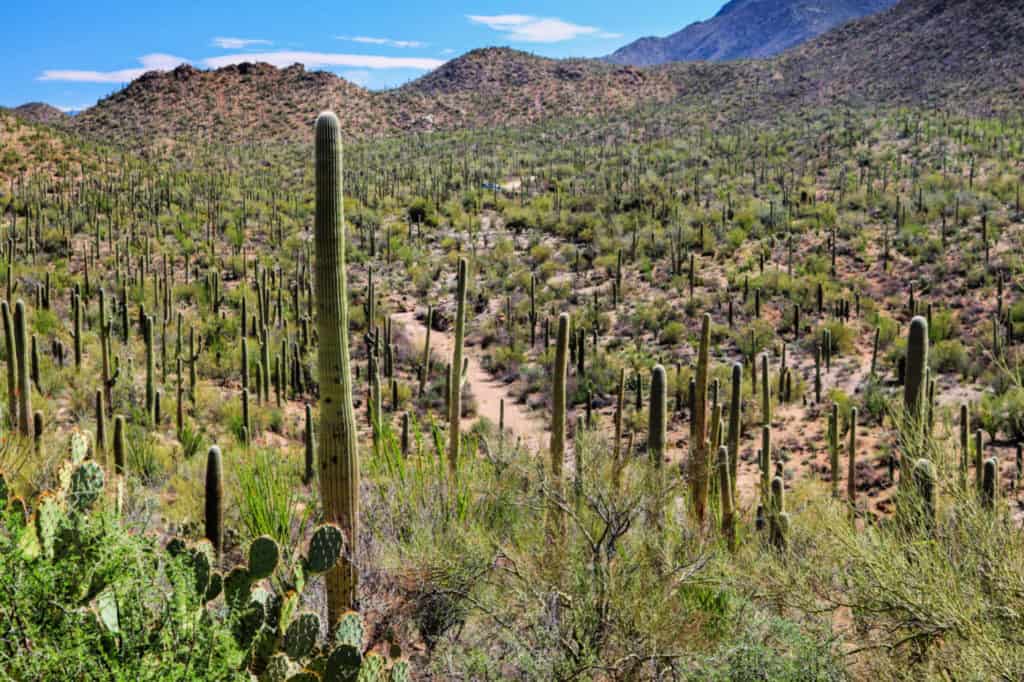
One of the top things to do in Saguaro National Park is to drive the Bajada Loop Drive. Despite being a dirt road, it’s very compact and regular sedans and hatchbacks can make the journey. The road should be driven counter clockwise.
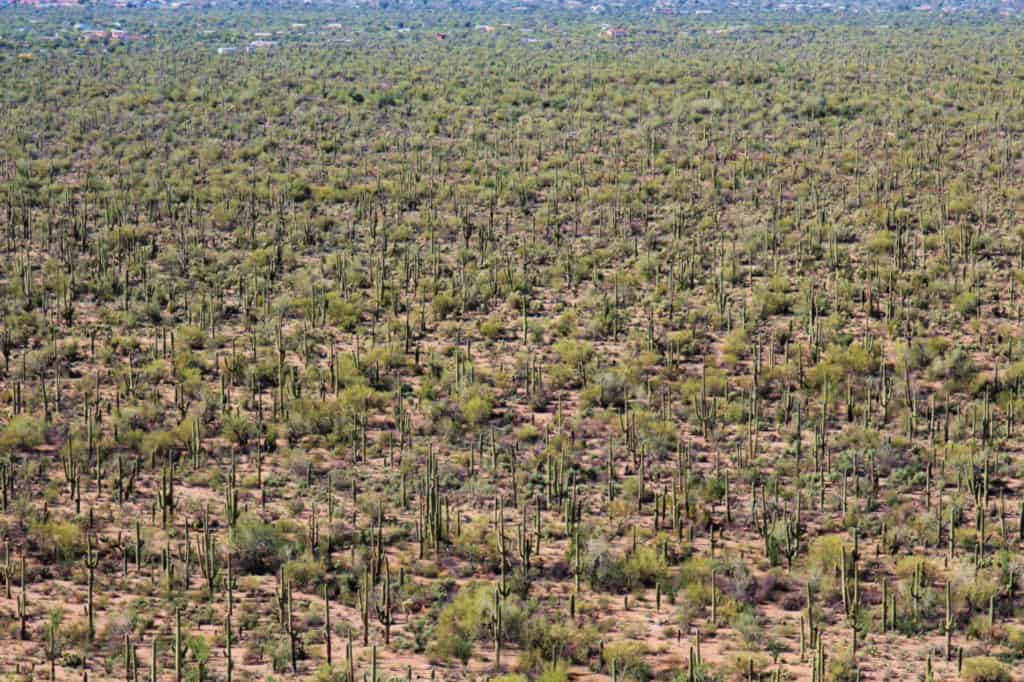
Along the scenic drive is one of the top day hikes in the park. The Valley View Overlook trail is less than a mile (1.6km) round trip and provides the chance to mingle with cactus, prickly pears and ironwood trees. The turnaround point also offers a gorgeous view of the park.
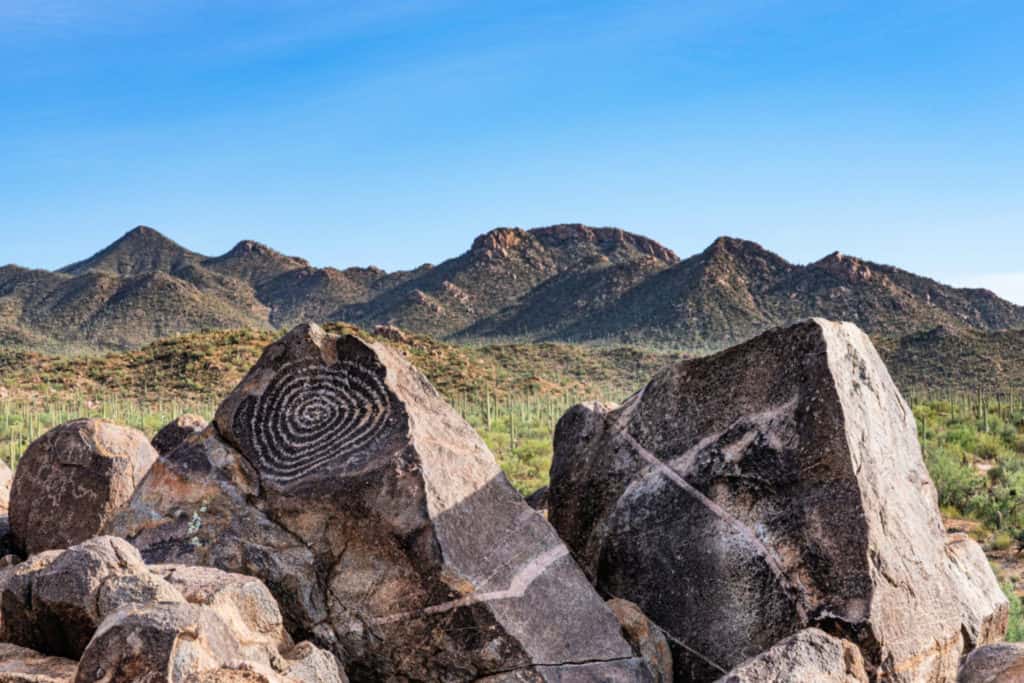
Among the dozens of short hikes and informative trails, a second must-do walk is the short hike to Signal Hill Petroglyphs. The 0.5 mile (800m) round trip offers beautiful views and petroglyphs drawn over eight centuries ago by the Hohokam people.
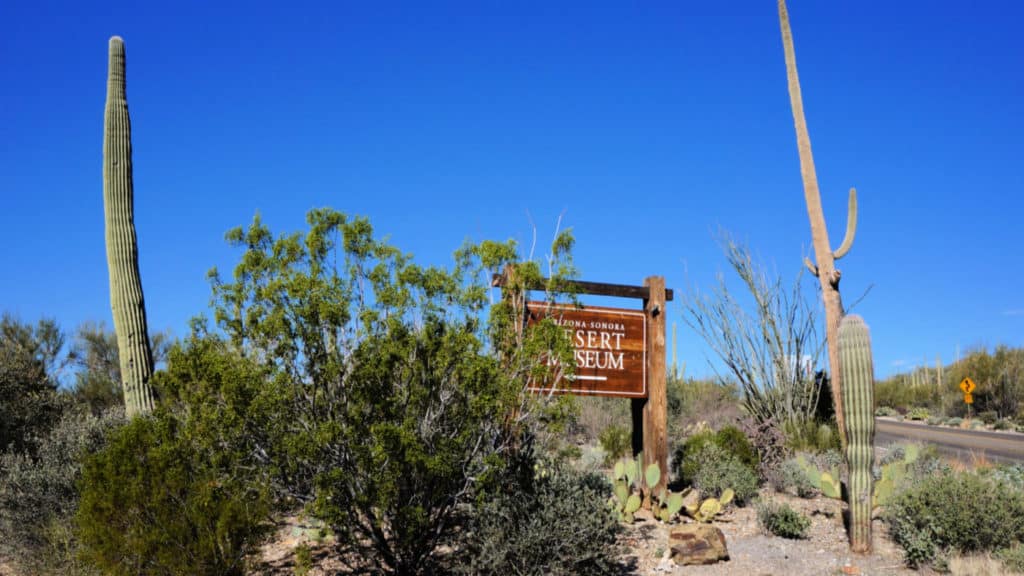
After seeing the highlights of the amazing Saguaro National Park, take your newfound love of the desert to the Arizona-Sonora Desert Museum. There is an insane amount to explore at this museum that is part zoo, part history museum, botanical garden and aquarium.
It’s easy to see why the museum is one of the top attractions in Tucson. You can explore up to 98 acres, featuring native plants, and wildlife such as mountain lions, black bears, and wolves. For what is essentially a zoo, it feels like a wild open space thanks to the invisible-fence enclosures. Each one connected by a hiking path that places you within the environment. For this reason, don’t skip out on water and sunscreen.
Other popular exhibits include the Hummingbird Aviary, the Earth Sciences Cave and 16 individual desert botanical gardens.
In truth, the Sonora Desert Museum is one of those places you’d need multiple days to explore. But that just shows how high quality the various exhibits are. Our tip: grab a map at the entrance and pick out the sections that you love the most and create a mini-itinerary of your own.
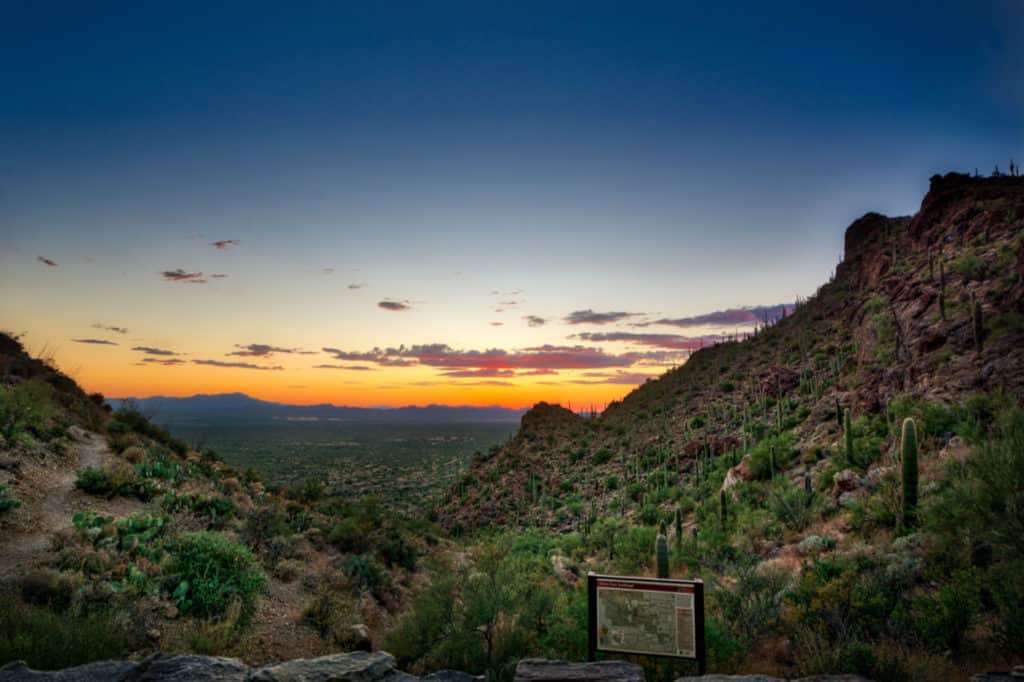
To finish up your desert experience, treat yourself to one of the best sunset spots in Tucson. Just south of Saguaro National Park Scenic is the Tucson Mountain Park, the home of Gates Pass. The memorable and steep scenic drive up to the pass leaves you at an elevation of 3172ft (966m). The blind curves may be tricky for the driver, but all passengers will enjoy stunning views of the mountains and cacti-filled landscapes.
At the overlook, kick back and enjoy the sun dancing on the horizon and the blazing colors reflecting off the desert mountains.
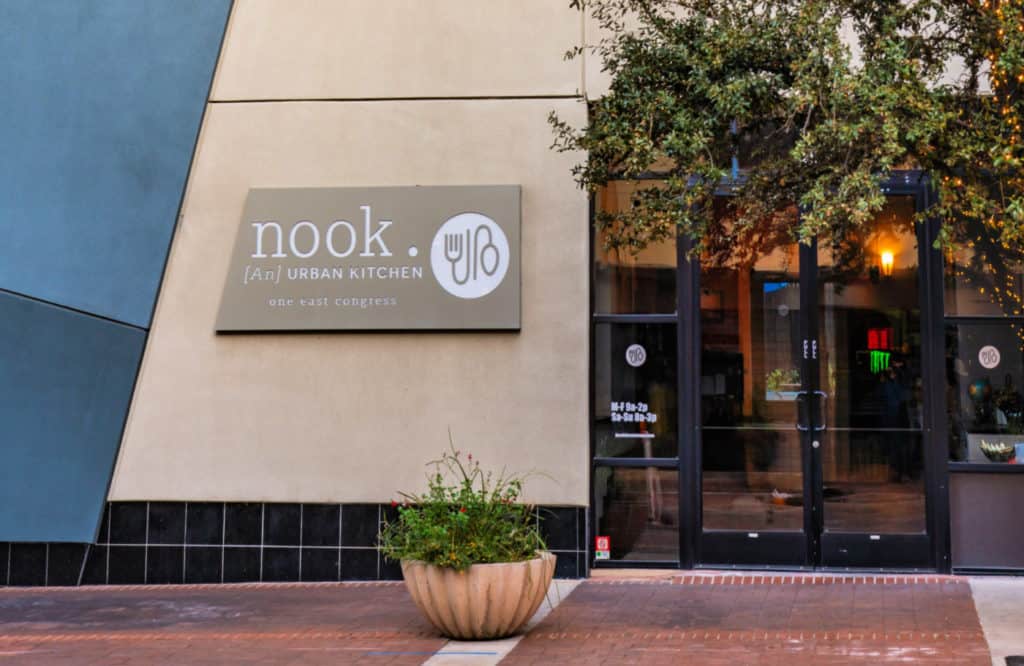
Where to Eat on Day Two in Tucson
With a big day of exploring ahead, begin your morning with breakfast at Nook. The hip cafe, with a modern layout, serves up modern brunch favorites with their Godfather Benedict, Shakshuka and mouthwatering hash browns.
If you have time to get back to Tucson for lunch, then pop into the highly rated WarFuel Kitchen. Healthy and quick, you can be back out on the road with a delicious lunch in minutes.
Day two dinner has to be at the one and only Feast. The relaxed bistro has an ever-changing menu featuring delectable cuisine and a hearty wine list. Later, venture down Speedway Boulevard for intimate cocktail lounges and laid-back pubs.
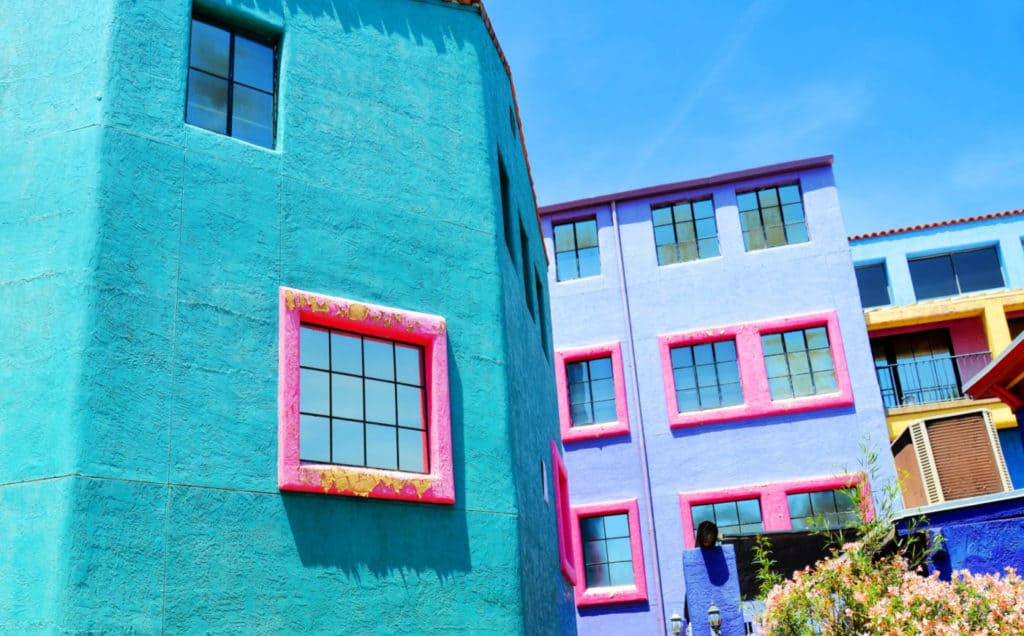
Day Three: Cycling, Architecture, and Scenic Byways
Tucson is home to over 100 miles of car-free bike paths that help link the various urban communities. A great way to explore Tucson, especially before the sun gets high in the sky, is to jump on a bike and ride.
With the help of Tugo Bike Share, you can explore the banks of the Santa Cruz River on the Loop Trail. To complete the full 60 mile ride, you’ll need three to four hours, but you can ride as little or as much of the flat, paved path as you like.
The best place to start is Mercado Station, where you can pick up your bike and be a brief ride away from the trail. As you ride along the Loop, you will have beautiful vistas of the river. On the other side, will be a series of small parks offering great places to rest and enjoy the scenery.
On the return ride, pass downtown to visit Barrio Viejo, a historic part of Tucson. Packed with colorful adobe houses and old school cantinas, wandering the streets grants you a wonderful insight into the early days on Tucson and a unique southern Arizona culture.
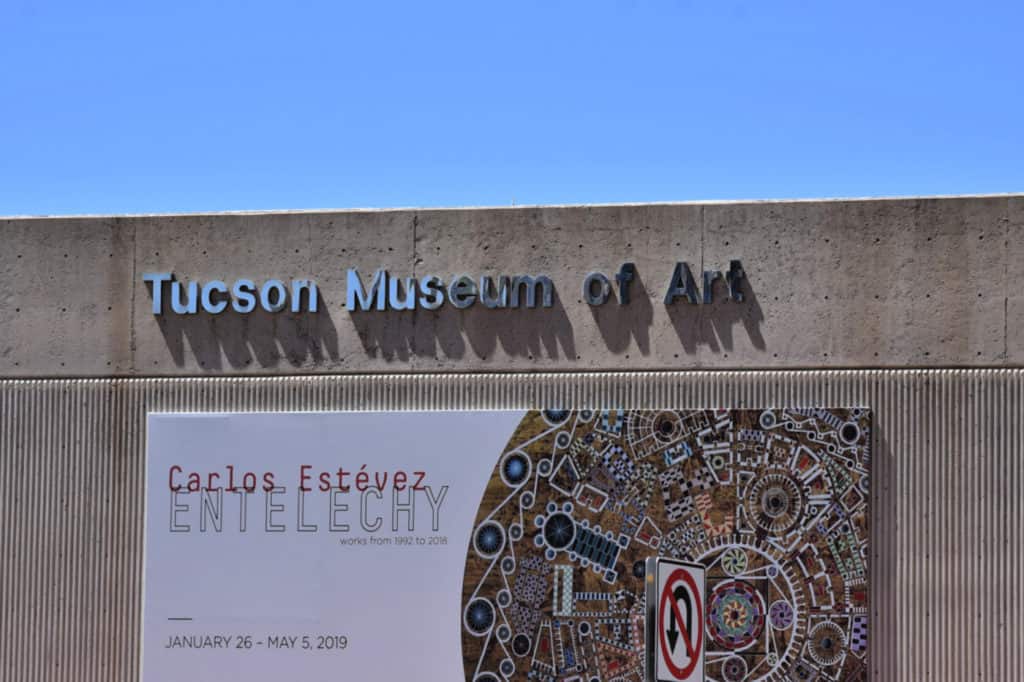
The next stop on your three-day Tucson itinerary is the Museum of Art. Keep your bike handy as the museum is also within the El Presidio neighborhood. Here the adobe homes date back as far as 1860. The neighborhood is home to the Sonoran Row houses, Hokoham pit houses, Mission Revival and American Territorial architecture.
With a morning exploring nature and early life in Tucson, enjoy the blissful A/C and the fine collections at the Tucson Museum of Art. Covering an entire city block, the museum is in a series of converted buildings from the 1800s.
Featuring historic Latin artwork, Southwestern pieces and contemporary folk art, the spacious museum will make sure you get your steps in.
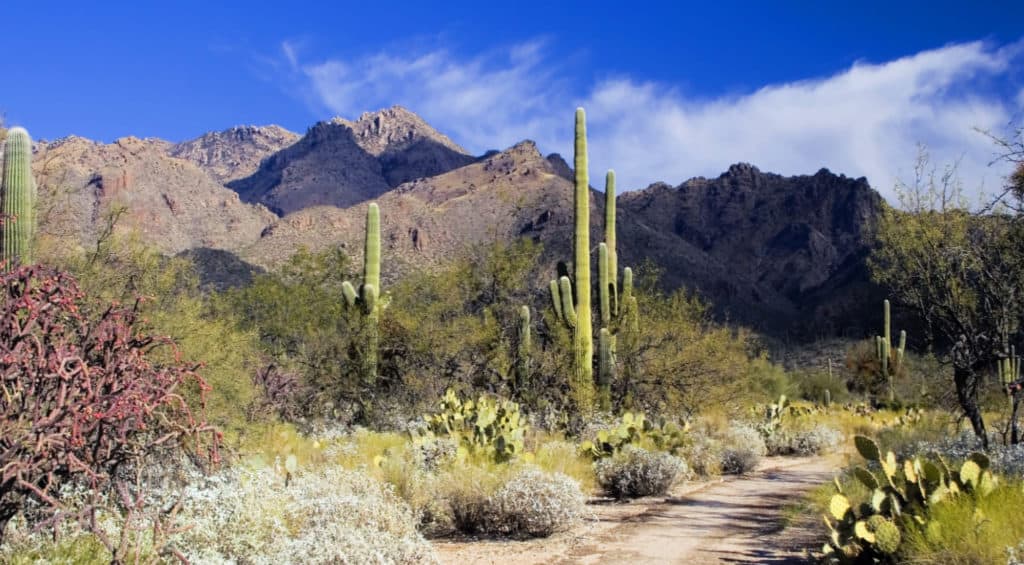
As your three days in Tucson begin to wind down, there lie two more activities to do that will help end your trip on a high note. The first is Sabino Canyon. Located just north of the city in the Santa Catalina Range. If you’re all tuckered out and not up for another hike, that’s fine as the canyon offers a spectacular 45-minute tram ride through the park’s rocky gorges.
If that stokes your sense of adventure, then you’ll have access to dozens of inspiring trails. None more enthralling than the Seven Falls hike.
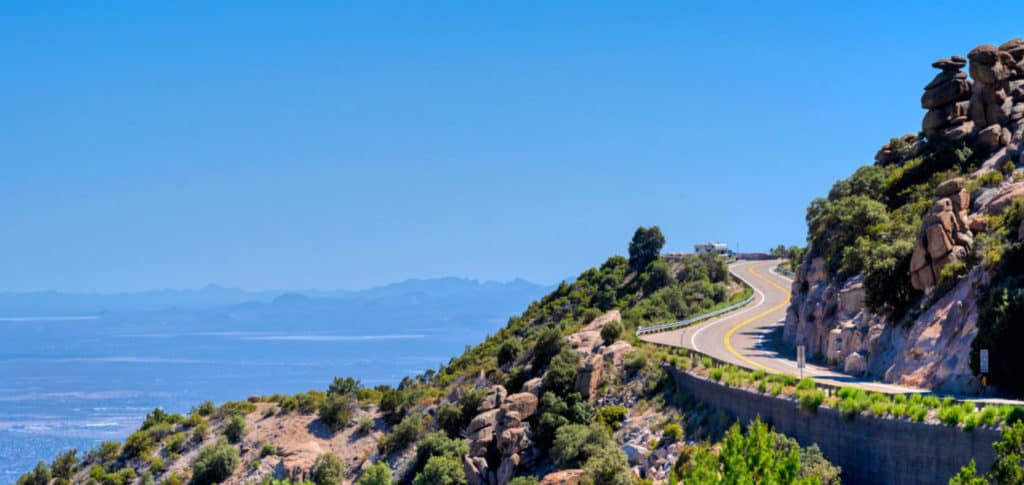
As you leave Sabino Canyon, you won’t have to go far for your last activity in Tucson. The Mt Lemmon Scenic Byway is a paved road that takes you close to the peak of the mountain and the entire Santa Catalina Range. The incredible views, deep canyons and saguaro hoards, make it one of the most amazing drives in southern Arizona.
The temperature drops dramatically as you reach the upper reaches of the byway as the desert shifts away from cacti into scenic spruce forests. A great way to experience the drive is to download an audio tour created by the University of Arizona.
Where to Eat On Day Three in Tucson
Before heading out on your ride around town, begin day three at Prep and Pastry. Arguably the best breakfast spot in town, enjoy homemade pastries and elevated breakfast dishes inside the wood-beamed cafe.
As you venture between the Barrio Viejo and El Presidio, pay a visit to Street Taco and Beer Co. Cheap, scrumptious food with massive servings, the brick-walled eatery hits the spot every time.
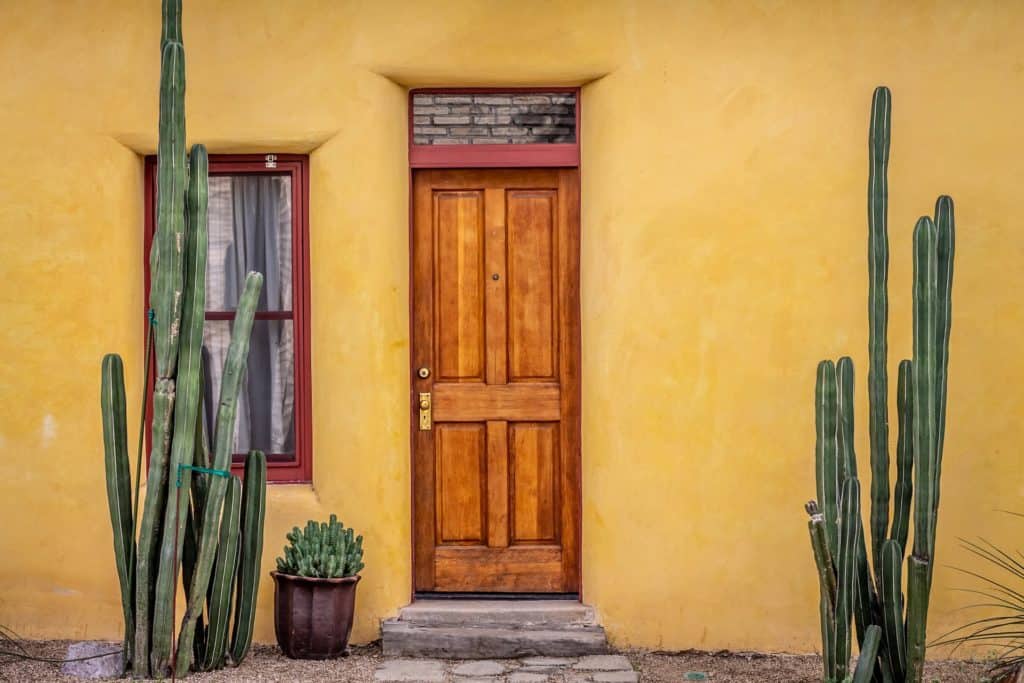
Final Thoughts
With barely a day without sun throughout the year, you can feel comfort knowing that the rain won’t ruin your three days in Tucson. Beyond glorious weather, the city has deep connections to Hispanic heritage.
The city is full of historic and cultural attractions, plus the sheer amount of authentic Mexican cuisine. Surrounded by mountains, Tucson also maintains a small-town feel and is a wonderful place to explore on foot. The city is yet to overgrow its natural landscape and maintains the historic adobes and missions where other places would have let them crumble.
However you choose to explore Tucson, keep a hold of this itinerary to help you explore the top attractions and discover the city’s hidden highlights.

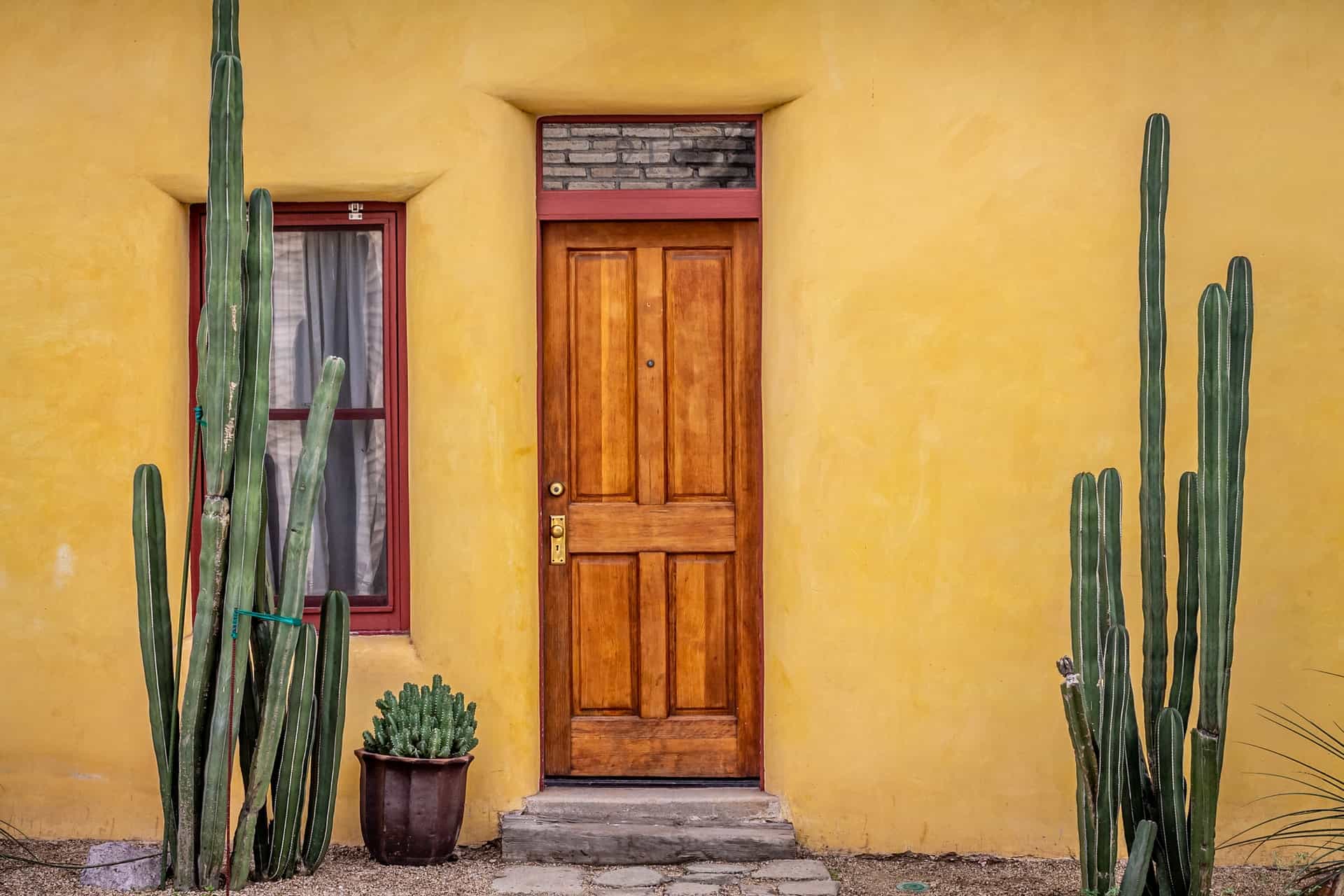

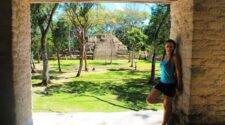
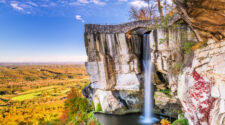


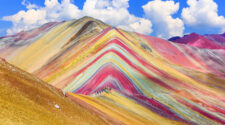
No Comment